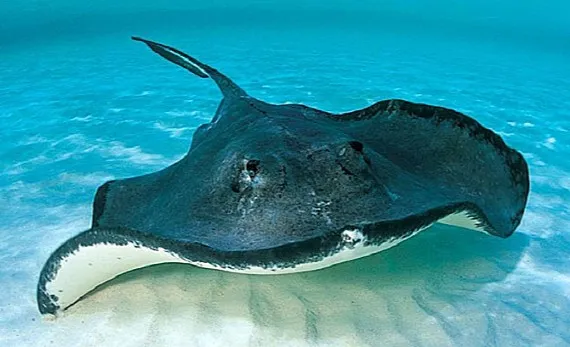Poisonous streaks are often found in shallow coastal waters of temperate seas. Most of the time they remain dormant, partially buried in sand, only moving with the sway of the waves. The color of the poisonous blanket usually reflects the tone of the bottom of the sea, allowing it to camouflage and hide from its predators (sharks and other larger rays). His body is flat and have pectoral fins attached to his head and torso and an unattractive tail.

The eyes of the stripe are on the dorsal side, while the mouth, nostrils and gill slits are in the belly. Therefore, scientists do not believe that the eyes play an important role in hunting. Like their relatives sharks, stripes have sensorsElectric called Lorenzini blisters located around the mouth and perceiving the natural electrical charge of potential predators. Many stripes have teeth that allow them to break mollusks like clams, oysters and mussels.

When they want to move, most stripes swim waving their bodies like a wave, others flutter their sides like wings. The tail can also help them move in the water, but they use it primarily to protect themselves.
The spine of the stripe sometimes has jagged edges and a sharp point. The lower part produces poison, which can be lethal to humans and that still remains even after the line dies. According to Greek mythology, Ulysses, King of Ithaca, was assassinated by his son Telégono, who stabbed him with a spear whose tip was the thorn of a poisonous streak.